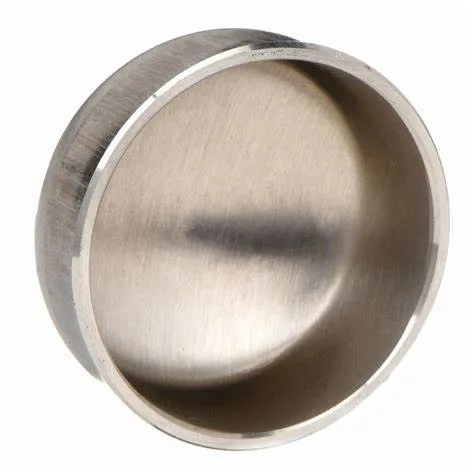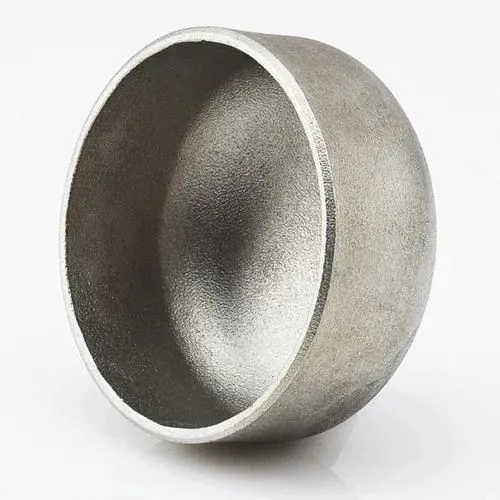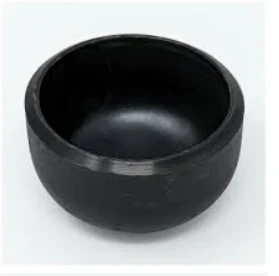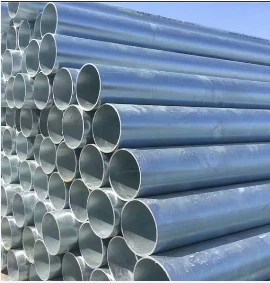JIS B2311 er en japansk industristandard som dekker stumpsveising av rørdeler, inkludert hetter som brukes i rørsystemer. Stumsveisehetter tjener til å lukke enden av et rør, og gir en tetning for å forhindre lekkasje eller forurensning. Her er en introduksjon til JIS B2311 stumpsveiselokk:
- 1. JIS B2311 Standard:
- - JIS B2311-standarden spesifiserer kravene til design, dimensjoner, materialer, produksjon og testing av stumpsveisefittings, inkludert hetter, i rørsystemer.
- - Standarden sikrer at hetter produsert i samsvar med JIS-standarder oppfyller kvalitetsstandarder og er kompatible med andre rørkomponenter.
- 2. Butt-sveisehette:
- - En stumpsveisehette, i henhold til JIS B2311, er en beslag designet for å dekke og tette enden av et rør sikkert, og gir beskyttelse og opprettholder integriteten til rørsystemet.
- - Hetter brukes i situasjoner der rørenden krever lukking, enten permanent eller midlertidig, for å forhindre lekkasje, forurensning eller for å gi en finish til systemet.
- 3. Materiale og konstruksjon:
- - Stumsveisehetter under JIS B2311-spesifikasjoner er tilgjengelige i forskjellige materialer som karbonstål, rustfritt stål og legert stål for å møte ulike brukskrav.
- - Disse hettene er produsert ved bruk av standardiserte konstruksjonsmetoder for å sikre en sterk og lekkasjefri forbindelse når de sveises til enden av et rør.
- 4. Søknad og fordeler:
- - Stumsveisingshetter finner anvendelse i ulike bransjer, inkludert olje og gass, kjemiske prosesser, vannbehandlingsanlegg og mer der røravslutninger må dekkes sikkert.
- - Hetter gir beskyttelse til rørender mot miljøelementer, forhindrer forurensning og bidrar til å opprettholde renheten og integriteten til rørsystemet.
- 5. Installasjon og sveising:
- - Riktig installasjonspraksis, inkludert korrekt innretting, klargjøring av rørenden og sveiseteknikker, er avgjørende når du installerer stumpsveiselokk for å sikre en tett og lekkasjesikker tetning.
- - Sveising er en vanlig metode for å feste hetter til rør, og gir en sikker og permanent lukking som tåler trykk, temperaturvariasjoner og væskestrøm i systemet.
- Oppsummert er JIS B2311 stumpsveisehetter avgjørende komponenter som brukes i rørsystemer for å forsegle og beskytte enden av rørene sikkert. Disse hettene samsvarer med standardiserte krav for å sikre kvalitet, pålitelighet og kompatibilitet innen industrielle applikasjoner der rørlukking og beskyttelse er nødvendig.
What Is a Butt Welding Cap and How Is It Used in Industrial Piping?
In industrial piping systems, end-of-line sealing and branch closures require robust solutions. A butt welding cap serves as a critical component for terminating pipes securely. By providing a seamless, welded closure, this fitting maintains system integrity, prevents leaks, and supports compliance with industry standards.
What Is a Butt Welding Cap?
A butt welding cap—also called a pipe end cap or buttweld end cap—is a round fitting designed to close off the end of a pipe. It’s manufactured to match the pipe’s outer diameter and schedule, with either a hemispherical or flat face. To install, both the pipe end and cap are beveled to form a V‑groove, enabling full‑penetration, fusion welds. Common materials include carbon steel, stainless steel, nickel alloys, and other engineered grades, chosen to satisfy pressure, temperature, and corrosion‑resistance requirements.
How Is Butt Welding Cap Used in Industrial Piping?
Butt welding caps find application across oil & gas, petrochemical, power generation, water treatment, and general process industries for both permanent and temporary closures. During hydrostatic testing, technicians install caps to seal off sections of piping while monitoring for leaks. In new construction or retrofit projects, caps terminate branch lines, future tie‑in spools, or dead‑end mains until system expansion. Welders prepare each joint by cleaning and beveling surfaces, aligning the cap precisely, and executing a root pass followed by filler passes per the qualified Welding Procedure Specification (WPS). Post‑weld heat treatment and non‑destructive examination (NDE)—such as radiography or ultrasonic testing—verify weld integrity and compliance with ASME B16.9 and related standards. Additionally, temporary caps enable safe isolation during maintenance, allowing for segment testing and dewatering under regulatory protocols.
Benefits and Best Practices
Butt welding caps offer a smooth‑bore transition that minimizes flow disruption and stress concentration. Their full‑penetration welds deliver exceptional structural strength and leak resistance. To optimize performance, engineers should:
Select caps with matching material grades and wall thicknesses
Adhere to proper bevel angles and joint fit‑up tolerances
Follow qualified WPS protocols rigorously
Consider cladding or protective coatings in corrosive environments to extend service life
Regular inspection and thorough documentation ensure long‑term reliability and safe operation under demanding conditions.
Butt welding caps are indispensable components for achieving durable, leak‑proof pipe terminations in a wide range of industrial applications.
Butt Welding Cap FAQs
What is a butt welding cap?
|
What materials are commonly used?
|
What standards govern butt welding caps?
|
How are butt welding caps installed?
|
Where are butt welding caps typically used?
|
What are the advantages of threaded caps?
|
















